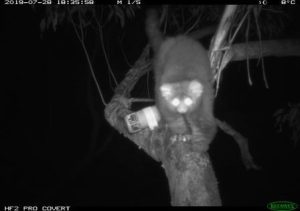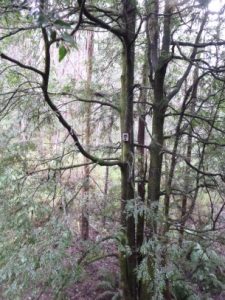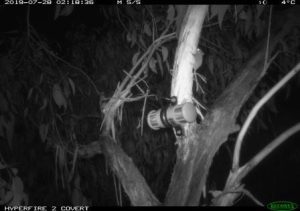
Treetec ecologists and arborists are specialists in being able to detect arboreal (tree dwelling) wildlife using remote thermal cameras. Our team in particular are skilled with monitoring and research in the tree canopies of a range of forest types and habitats in Victoria. We are able to modify our techniques to suit each individual client, the location and arboreal species involved. Contact us to assist in developing a solution for your project.
When our ecologists need to monitor arboreal species, we need to work alongside our arborists to get the cameras at a height into the trees to suit our preferred target species. Once we are working at height a whole range of safety and additional time factors add to the project. With all of our past experience we have developed a range of techniques to ensure our projects run smoothly.

Firstly, the choice of camera when setting wildlife camera traps in trees becomes very important. We choose cameras that are easy to set and use. Once a project leaves the ground it immediately becomes considerably more expensive due to the added equipment, personnel, time and risk, therefore the equipment (particularly cameras) becomes critical.
We ensure cameras are waterproof, batteries will last the distance, SD cards are adequate in storage size, the cameras reaction time is fast enough and the type of sensors are suited to your target. If there is a fauna species that tends to move up and down the trunk then we may have a very high false negative affect from cameras designed for deer hunters. Hence we modify all our techniques for each project to run most efficiently.
Secondly, the cameras need to be secured in the tree and aligned correctly to avoid false triggers from vegetation and angled light. False triggers are commonly caused by movement of the tree, especially at height and under windy conditions. Additionally, camera alignment is easily adjusted by curious wildlife visitors knocking loose set ups.

False triggers can add thousands of additional useless images to be viewed by our fauna photo tagging team and waste a lot of time. Therefore, little things like the way a mounting bracket may obstruct a door or the orientation of the control panel becomes very important.
Finally, when using an attractant or bait we consider how long it will last, the fixing method and the distance to the camera. Any more than a few metres and many smaller species won’t be detected by the camera at all, which can lead to a false outcome to the survey!
